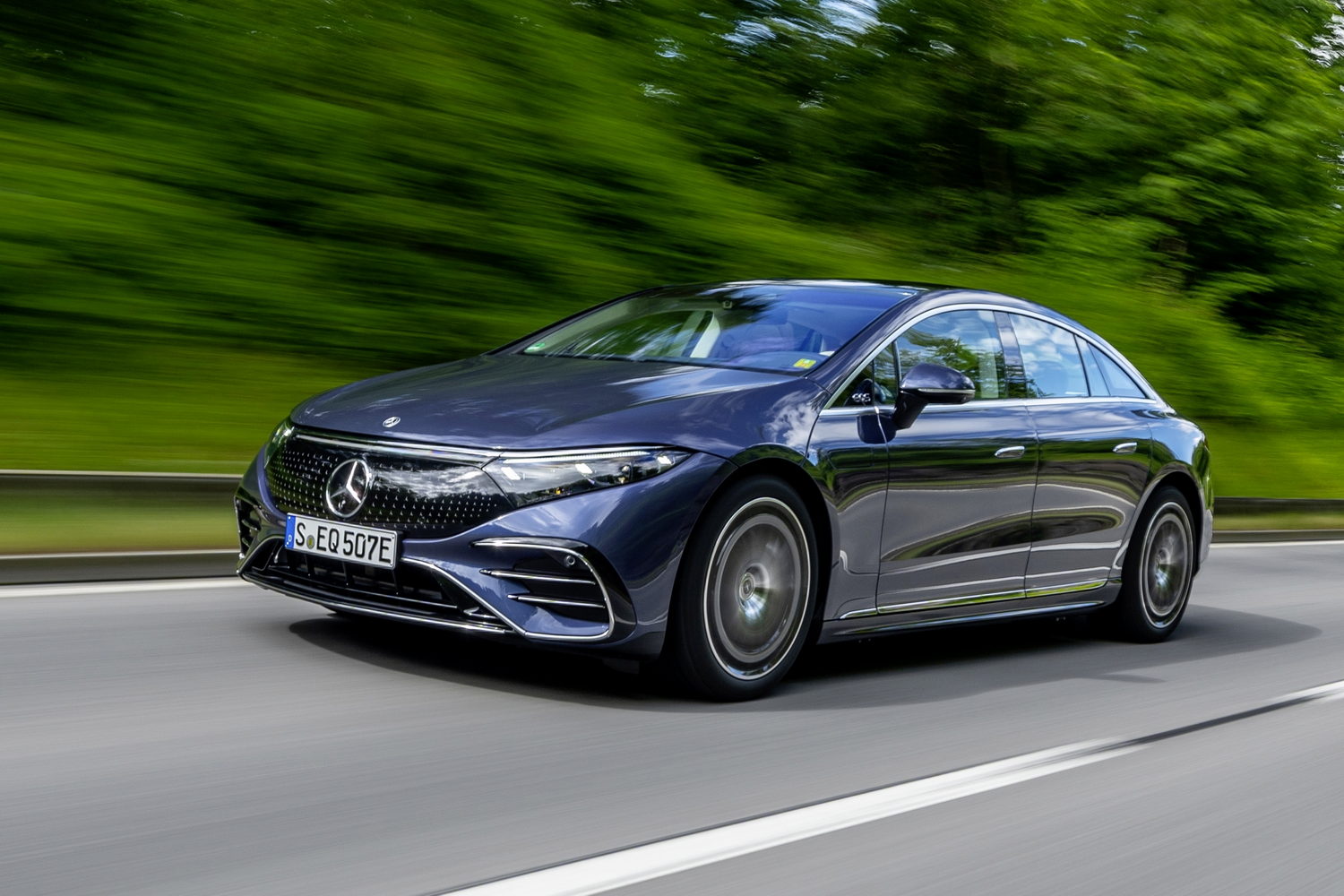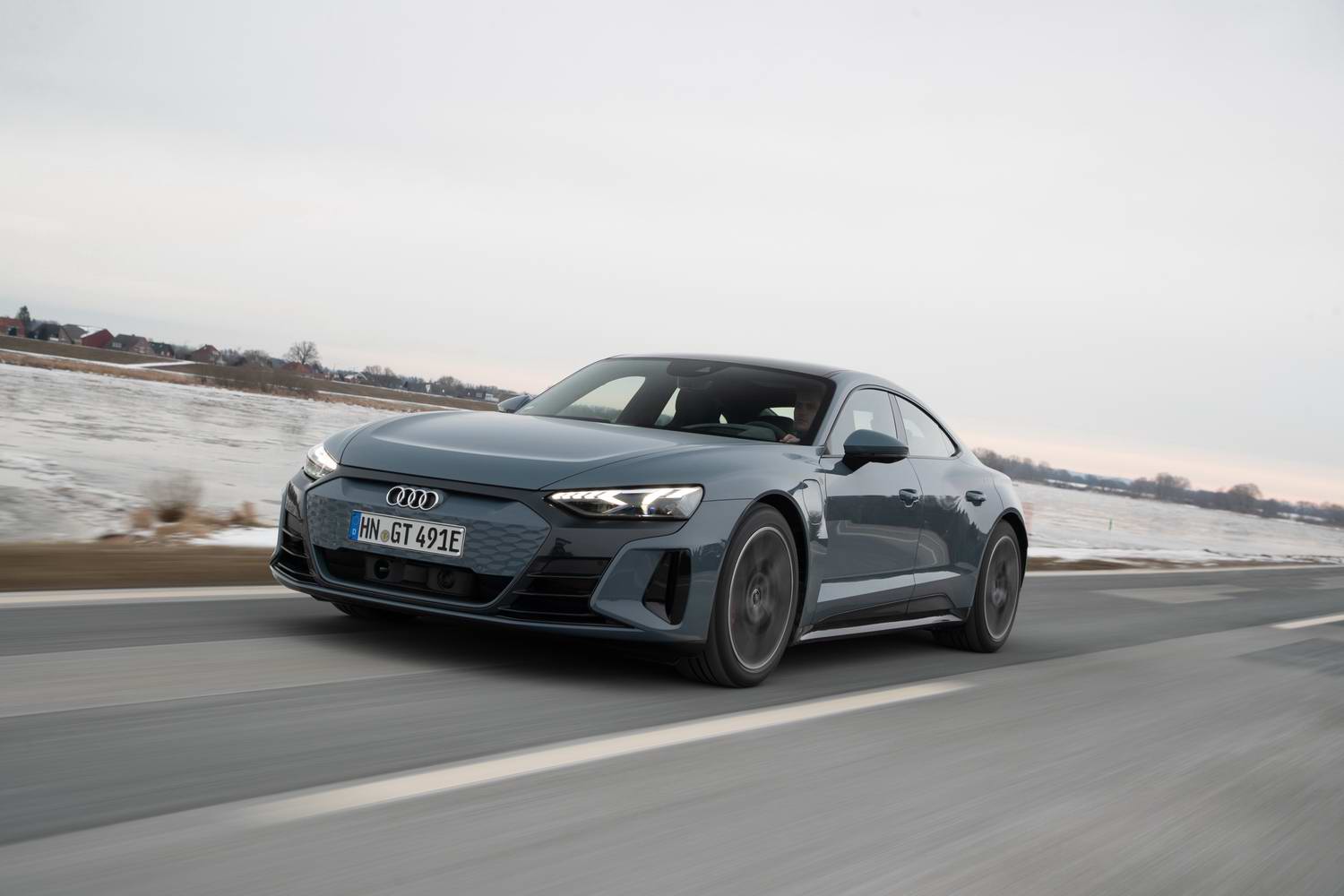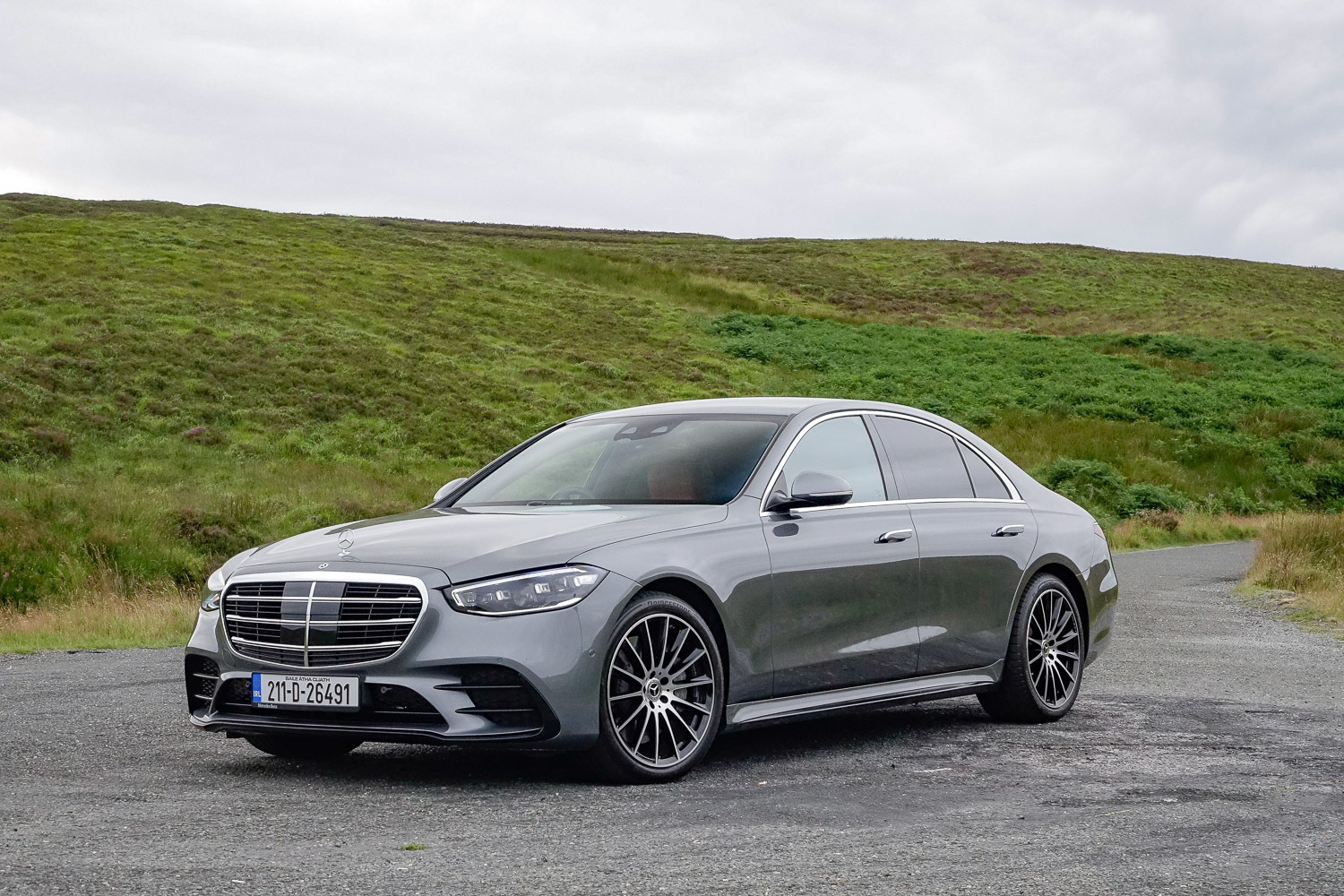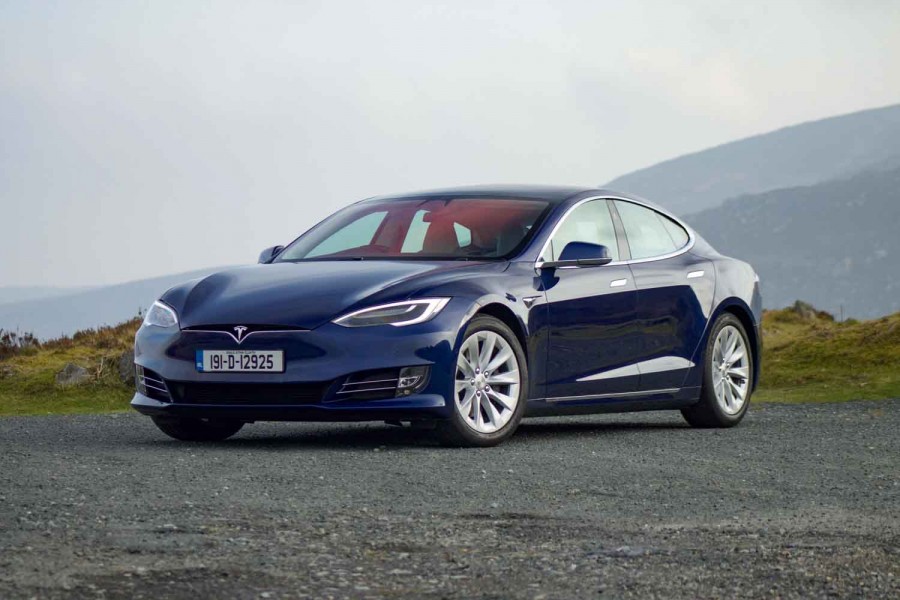The Mercedes EQS is a hugely impressive piece of luxury German engineering, and has exceptional one-charge range. For all its impressiveness, though, it's not without its niggles...
In the metal
It's an unusual car at which to look, the new Mercedes EQS. It's certainly a departure from the Mercedes norm for its large, luxury saloons. Take a look at the current S-Class, and you'll find a car that's none-more conformist with four-door saloon basic principles - long bonnet, cabin in the middle, followed by a long, tapering boot.
The EQS isn't like that. It's a car whose shape is defined by the long, arcing sweep of its roof. The boot and bonnet are appendages, almost afterthoughts to the middle portion. Mercedes design chief Gordon Wagener calls it the 'one-bow' roof and likens the car's overall style to a bullet train. Striking? Yes, at first, largely because your brain recognises it as something new and different. Once you've had a chance to adapt, the shape becomes a little less memorable, and has a habit of blending into the background somewhat.
One benefit of that slightly apologetic shape is incredible aerodynamic performance. The EQS's coefficient of drag is just 0.2, making it - by a mere tenth of a per cent - the most aerodynamic production car in the world (correct at time of writing, don't hold the author responsible if Tesla launches a Model S with rear wheel spats tomorrow...).
Inside, there's a small penalty for that shape, as the sweep of the roof does eat into rear headroom a touch. It's not a massive issue, unless you're very tall, but the more conventional, more upright S-Class is certainly roomier in that respect. If it's a problem, we suppose you could buy the taller EQS SUV instead.
Legroom in the back is generous, though, with acres to spread out and impressively comfortable rear seats. One small issue - the high floor, under which rests the massive 120kWh (107.8kWh net) battery means that if you've got long legs, your knees will be sitting slightly higher up than is entirely pleasant.
Up front, our test car - a pre-production model - lacked the whizz-bang 'Hyperscreen' dashboard. That option groups three screens (the instruments, massive central infotainment screen and a bonus screen for the front-seat passenger) under a continuous 55-inch glass surface. Dramatic it most certainly is, but from an actual operational and driving point of view, I do wonder if the separate instrument screen and reclining central touchscreen from the S-Class, as fitted to our test car, is actually a better setup. I suspect it will be less distracting when driving, and the reclining screen is easy and simple enough to use. The Hyperscreen will impress the neighbours, but as my dad would always have asked; 'what happens when it goes wrong...?'
Comfort levels in the front are ridiculously good. The heated-and-ventilated seats are little short of wonderful, and the soft, squishy pillows attached to the headrests are a sweet touch. Overall quality is excellent (slightly cheap column stalks aside) and small items, such as the gorgeous and tactile turbine-style air vents, are lovely. There's copious covered storage space in the centre console, and another open shelf down by your feet. Whatever else we can say about the EQS, it's certainly no chore to spend a great deal of time in its cabin.
The boot is also impressive, and given that there won't be an EQS estate, the fact that it's a 'liftback' significantly aids its practicality levels. You get 610 litres of luggage space (expanding to 1,770 litres with the rear seats folded down). There's no 'frunk' storage at the front, though. Indeed, the bonnet is actually a sealed panel, with just a little pop-out access point to allow you to top up the windscreen wash bottle.
Driving it
We need to start with stopping, so to speak, because the EQS's brakes are something of a point of contention. The first time you drive an EQS, you'll quite likely be shocked by how soft and spongy the brake pedal feels, and quite how long and hard you have to press it to get decent retardation. This is not good for a car weighing 2.4 tonnes at the kerb, and it's not a pre-production issue either; we've heard many similar reports from other sources.
The issue stems from the fact that the EQS is designed to use its regenerative braking system first, and its mechanical brakes second. Click the left-hand paddle behind the steering wheel and you activate maximum regenerative braking, at which point the EQS's braking setup starts to feel more natural. Now, as soon as you lift off the accelerator, you can feel the car slowing significantly, and you only need to use the physical brakes for the final little stop at the end. You can actually feel the brake pedal moving slightly as the system loads up the brakes ready for use. The problem is that when you switch the car off, it defaults to the middle setting for regenerative braking again, so you have to remember to reset to maximum when you start up, or risk a few heart-in-mouth braking moments. Perhaps Mercedes should simply default the setting to maximum.
Once you've gotten used to the braking, what you notice most about driving the EQS is the sheer silence. Some electric cars trip up when it comes to refinement, as the lack of mechanical background noise reveals a cacophony of squeaks, rattles, wind and tyre noise. Not here. Even at motorway speeds the EQS's cabin is so hushed that you could hear a bee cough. It is a truly relaxing environment.
Which is just as well, as there's not a lot here for the keen driver. The EQS has a chassis that's clearly capable and well-balanced, but there's no encouragement nor communication from the steering to involve you in the process. You instruct, and the EQS follows, but it doesn't really want to bother you with the detail of how. That's fine if you want to simply hit the outside lane, set the active cruise control and settle back for the journey, but on tighter roads a bit more communication would be helpful in picking the right line for what is a truly massive, and very heavy, car.
Around town, the EQS's case is helped by rear-wheel steering (which turns 4.5 degrees as standard, or 10 degrees optionally) that certainly makes it feel a little more manoeuvrable, but given the sheer bulk (and the expensive alloy wheels) your blood pressure will rise somewhat in small car parks or on narrow city streets.
The ride quality is also less than perfect. The EQS uses an air suspension setup, which is brilliant at ironing out big impacts and long-movement compressions (and which both reads the road ahead and can communicate warnings of poor surfaces to other cars in the area), but which is less good at sharp, sudden surface changes such as poorly-made urban streets, or motorway expansion joints.
Of course, what the EQS does best is range. Lots and lots of range. With that massive battery, the EQS 450+, and its single electric motor with rear-wheel drive, can go for an official 782km on a single charge. No, that's not a misprint. Even lopping a chunk off that to allow for real-world driving conditions and motorway use, you'll still probably get at minimum 500km between trips to the charger, and that makes the EQS a potential EV game-changer. Range anxiety? What's that?
In our hands, we were seeing an indicated range of more than 600km, even with a quarter of the battery drained - and some motorway mileage didn't seem to trouble it too much. With 333hp and 558Nm of torque, even with the 2.4-tonne kerb weight, the EQS 450+ doesn't hang around, and this massive limo is Golf GTI-quick to 100km/h. You can upgrade to the much more powerful EQS 580 4Matic four-wheel drive and EQS 53 AMG models, but to be honest we're not sure that there's much point. If you want to travel materially faster than the 450+ can manage, then you really need a racetrack...
What you get for your money
Irish prices for the EQS start from €129,965, which gets you the EQS 450+. To be honest, you probably don't need to go any higher up the spec sheet - this is the model with the most range, and it still has very impressive performance. You can upgrade to a four-wheel-drive 4Matic version, which gets more power (360hp), but less range (685km). For €145,300 there's a 449hp EQS 500, also with a 685km range, or at the top there's the 658hp four-wheel-drive Mercedes-AMG EQS 53 4Matic, which can manage 'only' 569km between charges.
All models come as standard with an AMG styling kit, 20-inch alloy wheels, velour floor mats, ambient lighting, open-pore walnut wood or Piano Black trim, an electric tailgate, wireless phone charging, parking assistance, active cruise control, blind-spot monitor and powered seat adjustment. High-end options include multi-function massaging seats front and rear, and a 710-watt, 15-speaker Burmester sound system that we can confirm is a brilliant companion for your AC/DC playlist.
Summary
We'd become so used to big Merc saloons being more or less untouchably perfect out of the box that the EQS's braking niggles (and its rear comfort and low-speed ride) came as quite the shock. Is it simply the shock of the new? Possibly - we got used to the brakes over time, and the other issues are relatively minor. What's unquestionable is that this version of the EQS is the EV with the longest possible range in this part of the world right now, and has arguably superior comfort and refinement to even a current Rolls-Royce Ghost or Bentley Flying Spur. True, it could be more fun to drive, but in terms of range, silence and relaxation, the EQS is a remarkable achievement.














